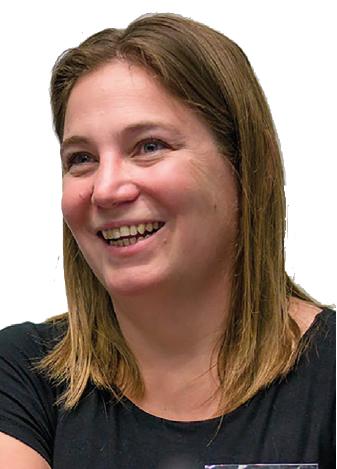What it will take to improve standards of SEND training

It’s somehow undervalued, oversubscribed, inconsistent and demanded by everyone – Karen Wespieser asks what it will take to improve standards of SEND teacher training…

The OECD’s latest data on teacher working conditions and learning environments includes one figure that sticks out like a sore thumb.
Just 6% of teachers in England recognised “A high level of need for professional development in teaching students with special needs.” That figure was the lowest proportion of teachers among all participating OECD countries.
Should we take this to mean that our teachers are clearly great at SEND provision? Possibly not, since the OECD figure appears to contradict an array of other relevant data collected previously.
DfE research has consistently shown that ‘teaching pupils with SEND’ and ‘assessing pupils with SEND’ come top among those areas that NQTs feel least confident in.
A DfE snap poll of teachers last year further revealed that 25% say there’s no appropriate training in place for teachers requiring assistance in supporting pupils with SEND.
A TeacherTapp poll this summer meanwhile found that nearly one in five teachers don’t feel confident teaching learners with an identified SEND, and that over a third hadn’t received any SEND CPD within the past year.
Undervaluing SEND
Let’s track back slightly and start at the beginning. Is there enough coverage of SEND currently included within initial teacher training courses? With so many different ITT providers and courses out there, it’s hard to say for sure what the extent of existing SEND course content actually is.
However, if we analyse Ofsted inspections of ITT providers over the past 10 years, we find that one in seven don’t mention SEN at all.
Granted, this doesn’t necessarily mean that those providers aren’t offering any SEND training whatsoever – but it does indicate that they aren’t being held accountable, should that prove to be the case.
Another study by UCL reviewed 193 ITT websites in order to establish how well SEND was being incorporated into their training programmes. It found that 54% of school-centred ITT courses and 38% of higher education institutions similarly failed to include any mention of SEND.
Again, it doesn’t follow that support for learners with SEND wasn’t being taught at all during these ITT courses, but there is the strong suggestion that SEND support is something that’s not valued by providers.
If SEND doesn’t appear to be an especially high priority within ITT, then what about the Early Career Framework?
Is it any more prominent there? Last year, the government announced that beginning in autumn 2021, early career teachers undergoing induction will receive two years of professional development and support underpinned by the ECF.
Search through the explanatory ECF documentation, however, and you’ll find just two mentions SEND – both of which place responsibility for supporting early career teachers firmly at the door of SENCos.
Time pressures
The problem here is that we all know SENCos are already incredibly busy people. Separate research by UCL suggests that 79% of SEND-themed CPD is presently delivered within schools solely by SENCos.
Contrast that with a 2017 evaluation carried out by the University of Plymouth into the impact and effectiveness of SENCo-delivered training, which revealed how four in 10 teachers believed their SENCo didn’t model effective practice of teaching pupils with SEND to their colleagues.
In 2018, a survey of SENCos’ workload commissioned by the NEU and nasen saw 74% of SENCos state that they didn’t have enough time to ensure pupils receiving SEND support were able to access the provision they needed.
If the SENCo workforce is already lacking the time needed to properly support pupils, it’s likely that finding even more time to support their colleagues as well will present quite a challenge.
SENCo training
To serve as qualified SENCos, teaching staff must undertake the National Award for SENCO (NASENCO) within two years of being appointed to the role. Yet polling data suggests that only half of the current SENCo workforce presently hold said award.
Of the remainder, 17% are currently ‘working towards the Award’ while a third don’t seem to be even planning to qualify.
The National Award itself is worth looking at more closely. The aforementioned Plymouth University study found that the Award focuses on theoretical and/or historical issues over practical information that would be more immediately applicable to participants’ school settings.
As one participant in the study said of the Award, “It has developed my knowledge about what researchers and psychologists have to say about SEND, but it would have been nice to have more a realistic approach to what being a SENCo means in a school.”
Areas identified by the researchers as not covered within the Award but potentially useful for practitioners included the following:
- Information on how to manage workload
- Ways of improving quality first teaching
- The process of selecting from different interventions
- Identifying SEND in the first instance
- More detailed information regarding a SENCo’s daily tasks and responsibilities More results, fewer resources
In a system where CPD of all types is already often treated as an afterthought, SEND professional development frequently comes bottom of the pile.
The government’s recently established ITT review group has confirmed that SEND won’t form part of its terms of reference, which means that responsibility for SEND training will continue to fall on school SENCos, as per the Early Career Framework.
And yet we know that SENCos currently possess neither the time, nor the training to take on this task and manage it effectively by themselves.
Something ultimately has to give, because we can’t keep expecting more in the way of results while investing less in the way of resources.
SEND CPD has to be prioritised. We need a systematic approach to imparting SEND knowledge and skills that starts with ITT providers and runs right through to schools’ ongoing CPD arrangements. Only then will we really begin to see the spread of great SEND provision across the country.
Action points
- DfE should revisit the Carter Review of ITT, examine the progress made and identify ways in which trainee teacher support in SEND can be improved
- Ofsted should judge ITT providers on the quality of their SEND-related training
- Teacher educators should develop National Professional Qualifications in SEND, as part of new plans to support teachers in developing and progressing their careers
- School leaders should ensure their SENCos are qualified, or at least in the process of qualifying for the NASENCO Award
- SENCOs should target their support at NQTs, since this group will likely see supporting pupils with SEND as a particular challenge
- Teachers should make use of the supporting resources available from senhub.org.uk, sendgateway.org.uk and elsewhere
Karen Wespieser is director of operations at the Driver Youth Trust.











